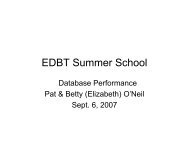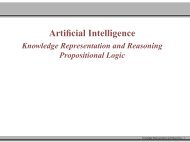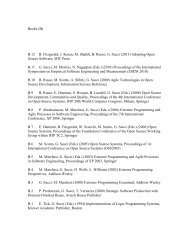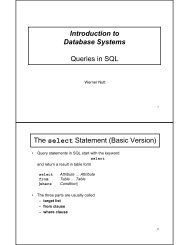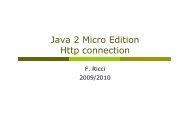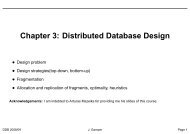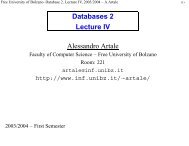Chapter 6: Query Decomposition and Data Localization
Chapter 6: Query Decomposition and Data Localization
Chapter 6: Query Decomposition and Data Localization
You also want an ePaper? Increase the reach of your titles
YUMPU automatically turns print PDFs into web optimized ePapers that Google loves.
<strong>Data</strong> <strong>Localization</strong> . . .<br />
• Example:<br />
– Assume EMP is horizontally fragmented<br />
into EMP1, EMP2, EMP3 as follows:<br />
∗ EMP1 = σ ENO≤”E3” (EMP)<br />
∗ EMP2 = σ ”E3””E6” (EMP)<br />
– ASG fragmented into ASG1 <strong>and</strong> ASG2 as<br />
follows:<br />
∗ ASG1 = σ ENO≤”E3” (ASG)<br />
∗ ASG2 = σ ENO>”E3” (ASG)<br />
• Simple approach: Replace in all queries<br />
– EMP by (EMP1∪EMP2∪ EMP3)<br />
– ASG by (ASG1∪ASG2)<br />
– Result is also called generic query<br />
• In general, the generic query is inefficient since important restructurings <strong>and</strong><br />
simplifications can be done.<br />
DDB 2008/09 J. Gamper Page 16



